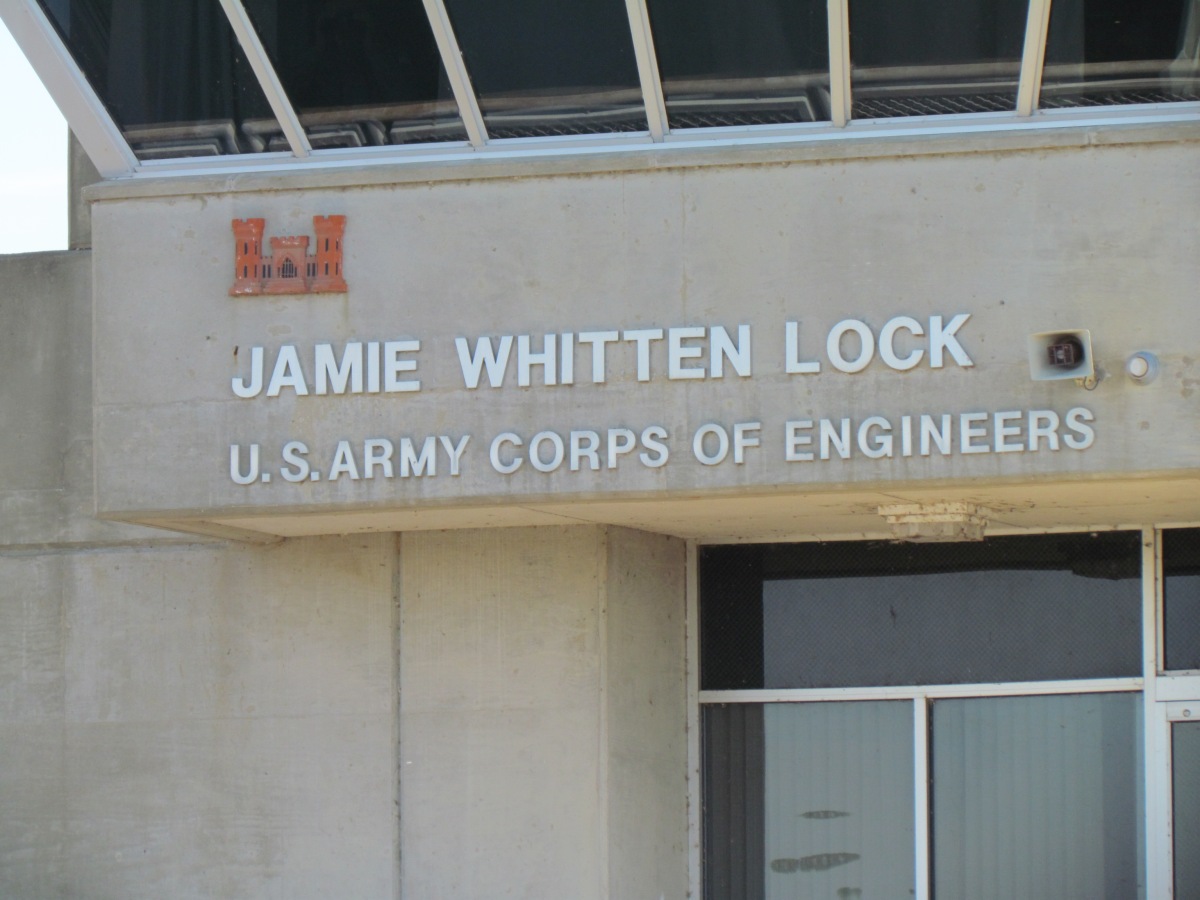October 4
I have lost count of the locks we have transited but there have been many. So today for those of you who aren’t familiar with locks, I will show you how we transited Jamie Whitten Lock and Dam.
I have lost count of the locks we have transited but there have been many. So today for those of you who aren’t familiar with locks, I will show you how we transited Jamie Whitten Lock and Dam.

Entering the lock
We are
approaching Jamie Whitten Lock and at this time we will contact the lock
requesting transit. Sometimes we are
able to enter the lock immediately, sometimes we have waited for hours. Some people have waited days when the lock is
going through a major repair. Commercial
vessels have priority over pleasure boats, although our experience has been
either, the lock master has asked a tow to wait for the pleasure boats to go
through, or the tow captains have told the lock to take us first. However, if a tow is in transit, it is usually
quite a wait. As we are a sailboat we
usually have to circle, anchor or with permission tie off on a wall.
The lock
will either call us or sound a horn as well as give a green light when we can
enter the lock. Prior to entering the
lock we usually determine whether it will be a port or starboard tie off. Locks can either have floating bollards or a
fixed bollard to secure your boat. A floating bollard moves
with the water level and a fixed bollard doesn’t move and you may need a lot of
line to accommodate the change in height.

Depending on what part of the river you are on, the lock will either raise or lower
the water level. At this time on the
Tenn-Tom we are descending in elevation so the water level will drop. Jamie Whitten Lock has (on our route) the largest
decrease with an 84 foot drop.

Floating bollard
Fixed bollard
As you
slowly enter the lock you find a bollard to tie off and secure your boat. We have found most of the locks we have
visited have floating bollards, which are preferred by most boaters. You are actually not tying off your
boat, but wrapping a line around a bollard, then holding on to the loose or bitter end. This is done so you can quickly free your
boat should there be a problem. A frozen
bollard is a good example. We have
experienced floating bollards that have momentarily frozen. You do not want to be secured to a bollard with a rapidly rising or dropping water level. Having a sharp
knife is also handy to quickly cut lines to free your boat.
Once your boat is positioned at the bollard, we notify the lock master that we are secure. Usually around this time they will begin to close the door. The other gate is closed when you enter. Now we just wait, Bruce is usually holding the midship line and I am fending the bow off the lock wall.
Bruce is holding the loose end.
This is the gate we came through, notice the before and after pictures. This is the before picture.
Once your boat is positioned at the bollard, we notify the lock master that we are secure. Usually around this time they will begin to close the door. The other gate is closed when you enter. Now we just wait, Bruce is usually holding the midship line and I am fending the bow off the lock wall.
An after picture, notice how high the wall is.
This is the gate we will be exiting. Notice the difference in height from the first picture of the gate (above).
When the lock
has obtained the water level necessary, the exit gate will open. We stay secured to the wall until the lock
master sounds the horn or gives permission to leave. At that point we continue on our way, another
lock behind us!
Good bye and thank you to Jamie Whitten Lock and Dam
On to Aberdeen, MS on Tenn-Tom Waterway to wait out tropical storm Nate~~~~~→








No comments:
Post a Comment